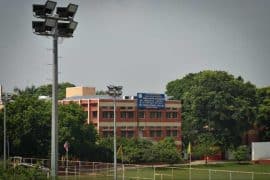At DU’s centenary celebration, the PM brought up the fact that there are more girls enrolled at DU than boys. However, the classrooms paint a rather different picture.
The University of Delhi recently celebrated its 100th anniversary. Large-scale events were organised, the Prime Minister and Education Minister were invited as chief guests. In his speech, the Prime Minister congratulated DU on its 100th anniversary and highlighted the fact that more girls than boys are enrolled in DU classes. But do our classrooms deliver an identical picture?
According to The Indian Express, DU’s enrolment has dropped to a five-year low, slipping from 73,374 students in 2018-2019 to 64,915 in 2022-2023. Girls’ enrolment in UG courses plunged by 37.75 percent this year, from 54,818 in 2021 to 34,120 in 2022-2023, whereas male enrollment fell by just 1,585, from 32,380 in 2021 to 30,795 this year. Overall, girls made up 52.5 percent of the entire undergraduate student body at DU this year, compared to 62.87 percent in 2021-22.
Even before the significant drop in enrollment, these figures demonstrate that “DU has more girls enrolled than boys”. However, what is crucial to note here is the concentration of female students. The majority of these 52.5% female students are enrolled in SOLs, or women’s colleges. If one focuses on regular courses in co-ed colleges, female students in some colleges account for less than one-third of the overall student population.
According to an All India Survey on Higher Education (AISHE) report, the gender gap in UG programmes worsened following the pandemic. In Kirori Mal College, there are 28 girls* in BSc. (H). Mathematics, 2021-2024, a batch of 104 students. The same is true for the majority of batches. In an interview, former principal of KMC Vibha Singh Chauhan blamed the absence of a girls’ hostel as a major reason for such a wide gap in the sex ratio.
However, the case of Hindu College presents a completely different scenario. Hindu College, which has a girl’s hostel, only has 39% female students. The administration fails to provide a valid explanation behind the skewed gender ratio. A number of DU colleges started to relax female student’s cut-offs by 1%. While Sri Aurobindo College saw a 10% rise in female student enrollment following its implementation, other institutions observed no substantial change.
However, with the introduction of CUET, the implementation of this relaxation is hidden. Not only that, but the puzzling cycle of CUET and admission via CSAS (Common Seat Allocation System) also plays a significant role. Most female students from marginalised backgrounds and smaller towns struggle to get a quality education. With new hurdles planted, many end up giving up on their dreams. In an article by Feminism In India (FII), Sharda Dixit, a retired school principal, said:
The problem was especially observed amongst students coming from financially weaker backgrounds, the ones who were not able to avail the pricey coaching and the preparation guidebooks. This led to the exclusion of these students from the race and crushed their dreams underfoot. The CUET is a device to deprive students of their basic right to education.
Another major issue is women’s safety in the city and on campus. Economist Girija Broker estimated in her paper that, “for a 3% annual decrease in the probability of being raped, women attending Delhi University are willing to go to a college in the bottom 50% rather than one in the top 20%”. Broker conducted a survey of 2,700 DU students and observed that most women prefer travelling by car or the metro, even if it costs more or takes more time. On the other hand, bus is the primary form of transportation for men.
All of these studies, articles, and interviews have one thing in common: the university’s acceptance of the existence of a gender gap for the sake of it. Instead of concentrating on the reasons for such a large gender gap, even after 100 years of existence, DU is preoccupied with crafting its own hazy gender equality image. With the gender gap widening as a result of CUET, the question grows, “Are we progressing forward or backward?”
Read also: The Unrepresented- Women and Student Politics In India
Featured Image Credits: TOI
Dhruv Bhati
[email protected]





Comments are closed.